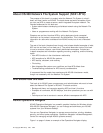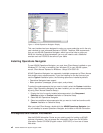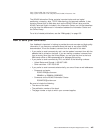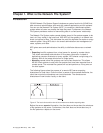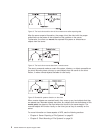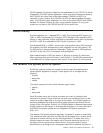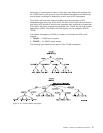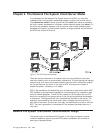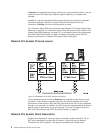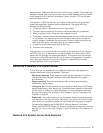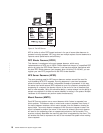
OS/400 Network File System Support is the replacement for the TCP/IP File Server
Support/400 (FSS/400) system application. Users who are accustomed to working
with FSS/400 will notice many similarities between FSS/400 and NFS. It is
important to note, however, that FSS/400 and NFS are
not
compatible with each
other. The FSS/400 system application can exist on the same AS/400 with OS/400
Network File System Support, but they cannot operate together. On any given
system, do not start or use FSS/400 and NFS at the same time.
A Brief History
Sun Microsystems, Inc.** released NFS in 1984. Sun introduced NFS Version 2 in
1985. In 1989, the Request For Comments (RFC) standard 1094, describing NFS
Version 2, was published. X/Open published a compatible version that is a standard
for NFS in 1992. Sun published the NFS Version 3 protocol in 1993.
Sun developed NFS in a UNIX** environment, and therefore many UNIX concepts
(for example, the UNIX authentication) were integrated into the final protocol. Yet
the NFS protocol remains platform independent. Today, almost all UNIX platforms
use NFS, as do many PCs, mainframes, and workstations.
Most implementations of NFS are Version 2, although a number of vendors are
offering products that combine Version 2 and Version 3. The AS/400 implementation
of the Network File System supports both Version 2 and Version 3 of the protocol.
The Network File System as a File System
AS/400 file systems provide the support that allows users and applications to
access specific segments of storage. These logical units of′ storage are the
following:
v libraries
v directories
v folders
The logical storage units can contain different types of data:
v objects
v files
v documents
Each file system has a set of logical structures and rules for interacting with
information in storage. These structures and rules may be different from one file
system to another, depending on the type of file system. The OS/400 support for
accessing database files and various other object types through libraries can be
thought of as a file system. Similarly, the OS/400 support for accessing documents
through folders can be thought of as a separate file system. For more information
on AS/400 file systems, please see the
Integrated File System Introduction,
SC41-4711.
The Network File System provides seemingly “transparent” access to remote files.
This means that local client files and files that are accessed from a remote server
operate and function similarly and are indistinguishable. This takes away many
complex steps from users, who need a set of files and directories that act in a
consistent manner across many network clients. A long-term goal of system
administrators is to design such a transparent network that solidifies the belief of
Chapter 1. What is the Network File System? 3
|
|
|
|
|
|
|
|
|
|



